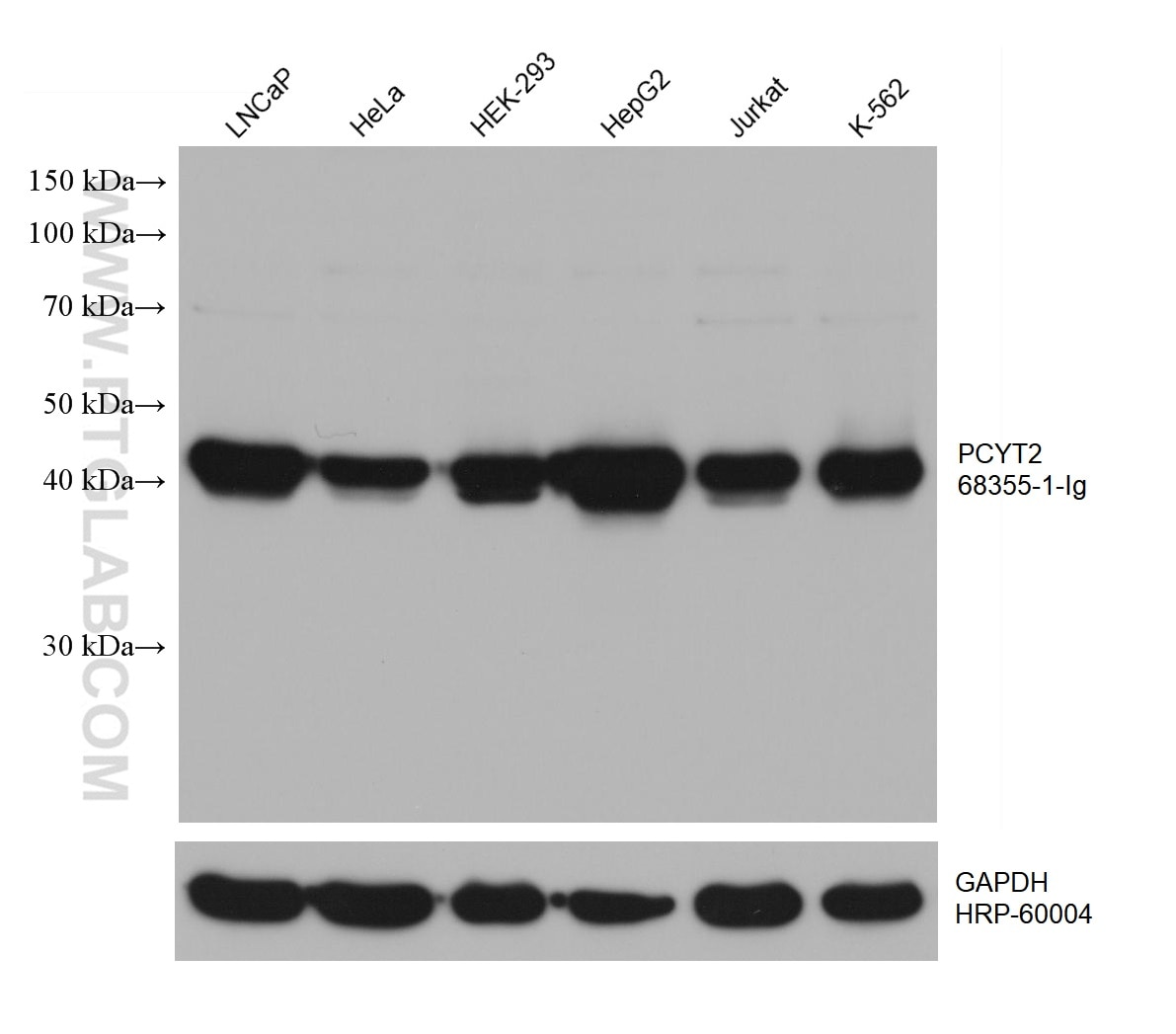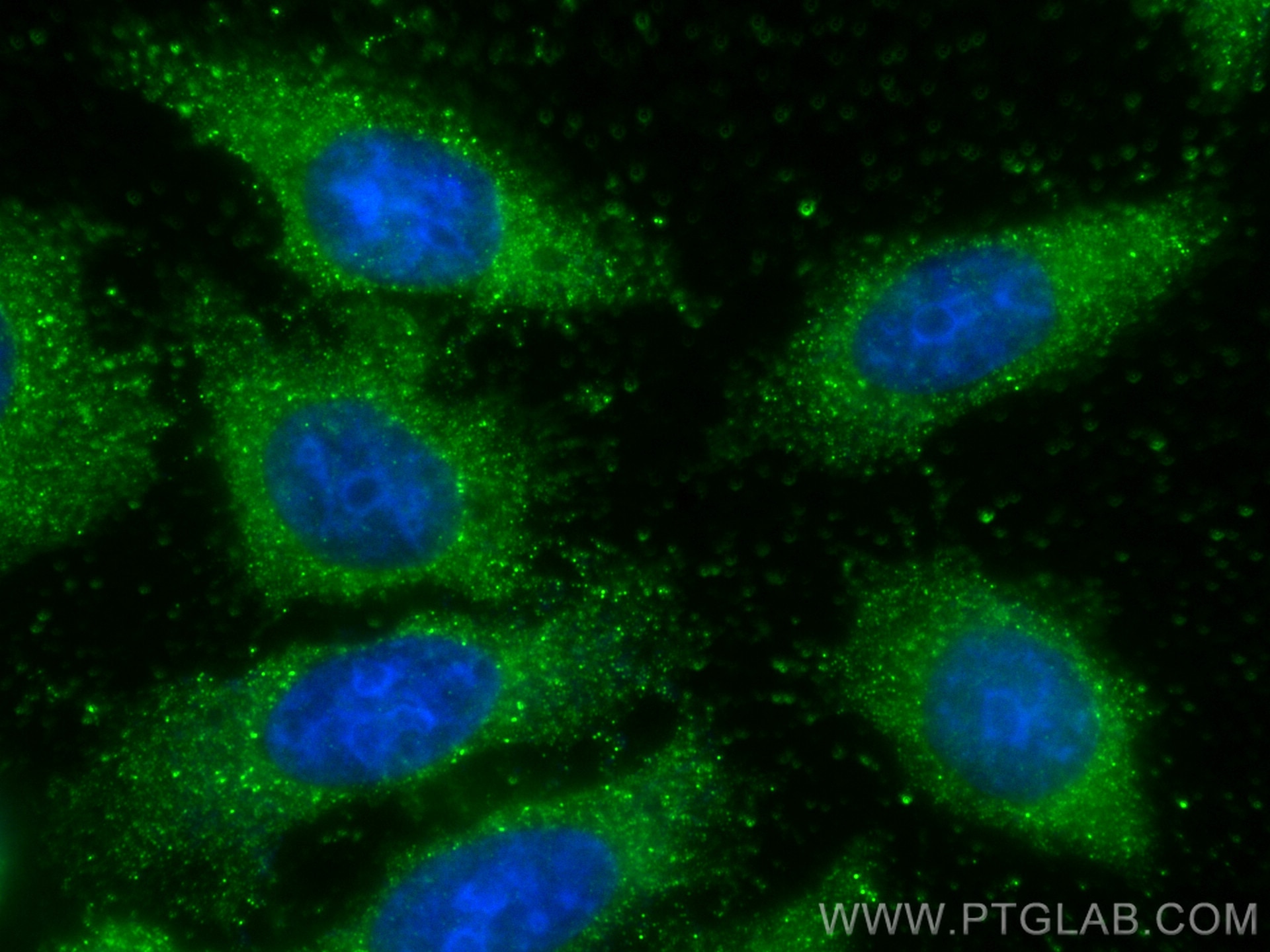PCYT2 Monoklonaler Antikörper
PCYT2 Monoklonal Antikörper für WB, IF/ICC, ELISA
Wirt / Isotyp
Maus / IgG2a
Getestete Reaktivität
human
Anwendung
WB, IF/ICC, ELISA
Konjugation
Unkonjugiert
CloneNo.
2F7G1
Kat-Nr. : 68355-1-Ig
Synonyme
Geprüfte Anwendungen
| Erfolgreiche Detektion in WB | LNCaP-Zellen, HEK-293-Zellen, HeLa-Zellen, HepG2-Zellen, Jurkat-Zellen, K-562-Zellen |
| Erfolgreiche Detektion in IF/ICC | HepG2-Zellen |
Empfohlene Verdünnung
| Anwendung | Verdünnung |
|---|---|
| Western Blot (WB) | WB : 1:5000-1:50000 |
| Immunfluoreszenz (IF)/ICC | IF/ICC : 1:400-1:1600 |
| It is recommended that this reagent should be titrated in each testing system to obtain optimal results. | |
| Sample-dependent, check data in validation data gallery | |
Produktinformation
68355-1-Ig bindet in WB, IF/ICC, ELISA PCYT2 und zeigt Reaktivität mit human
| Getestete Reaktivität | human |
| Wirt / Isotyp | Maus / IgG2a |
| Klonalität | Monoklonal |
| Typ | Antikörper |
| Immunogen | PCYT2 fusion protein Ag6604 |
| Vollständiger Name | phosphate cytidylyltransferase 2, ethanolamine |
| Berechnetes Molekulargewicht | 44 kDa |
| Beobachtetes Molekulargewicht | 44 kDa |
| GenBank-Zugangsnummer | BC000351 |
| Gene symbol | PCYT2 |
| Gene ID (NCBI) | 5833 |
| Konjugation | Unkonjugiert |
| Form | Liquid |
| Reinigungsmethode | Protein-A-Reinigung |
| Lagerungspuffer | PBS with 0.02% sodium azide and 50% glycerol |
| Lagerungsbedingungen | Bei -20°C lagern. Nach dem Versand ein Jahr lang stabil Aliquotieren ist bei -20oC Lagerung nicht notwendig. 20ul Größen enthalten 0,1% BSA. |
Hintergrundinformationen
Ethanolamine-phosphate cytidylyltransferase (PCYT2) catalyzes the second step in the synthesis of phosphatidylethanolamine (PE) from ethanolamine via the CDP-ethanolamine pathway (PMID:9083101, PMID:31637422). Phosphatidylethanolamine is a dominant inner-leaflet phospholipid in cell membranes, where it plays a role in membrane function by structurally stabilizing membrane-anchored proteins, and participates in important cellular processes such as cell division, cell fusion, blood coagulation, and apoptosis (PMID:9083101).
Protokolle
| PRODUKTSPEZIFISCHE PROTOKOLLE | |
|---|---|
| WB protocol for PCYT2 antibody 68355-1-Ig | Protokoll herunterladen |
| IF protocol for PCYT2 antibody 68355-1-Ig | Protokoll herunterladen |
| STANDARD-PROTOKOLLE | |
|---|---|
| Klicken Sie hier, um unsere Standardprotokolle anzuzeigen |



